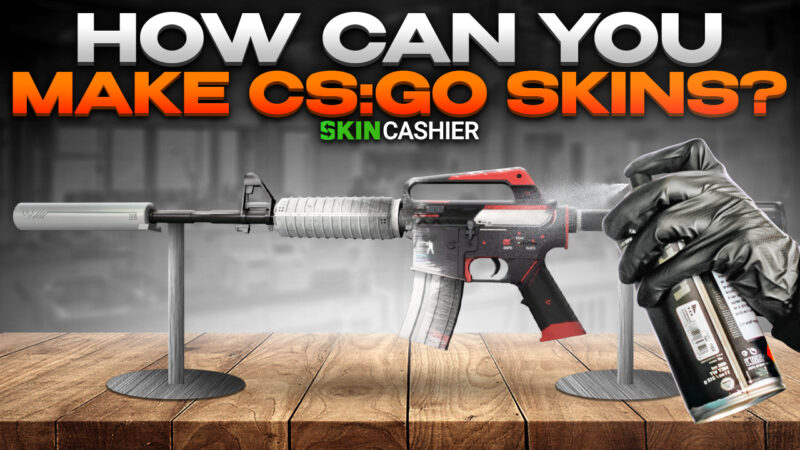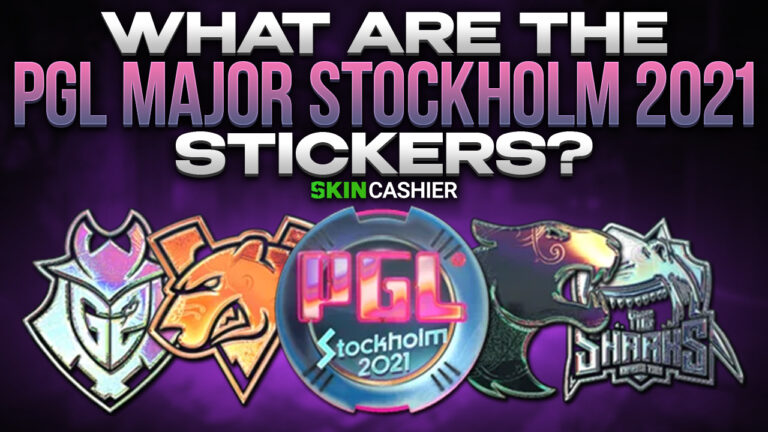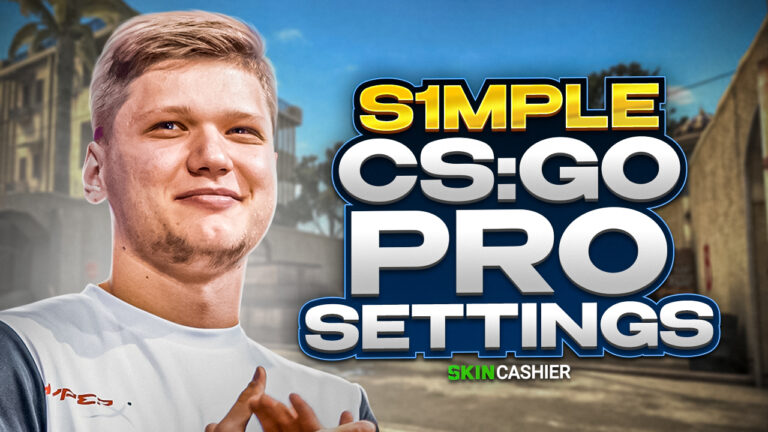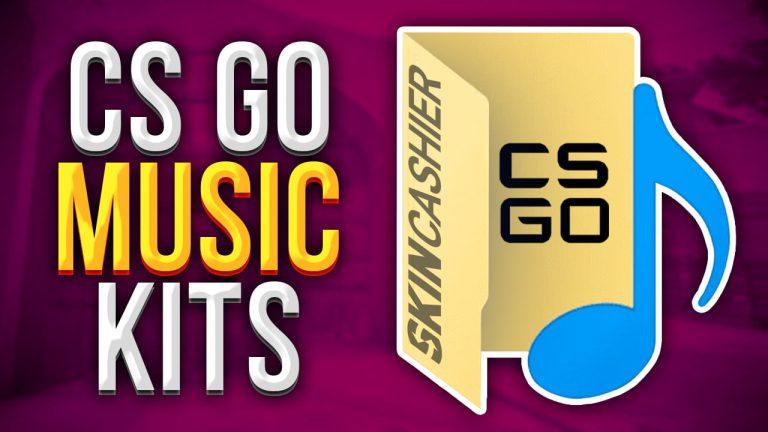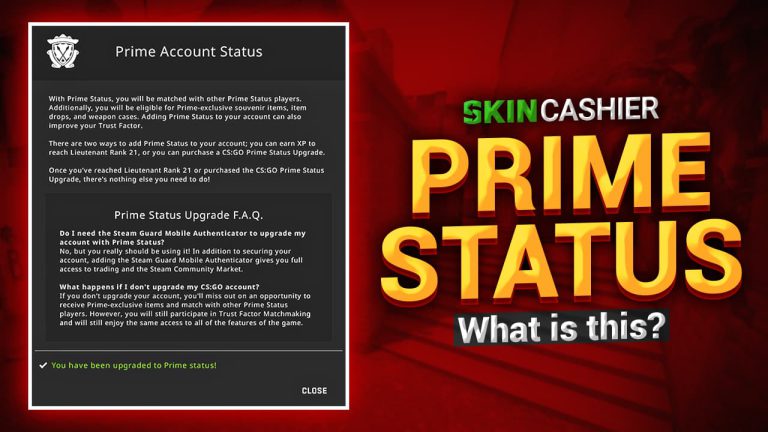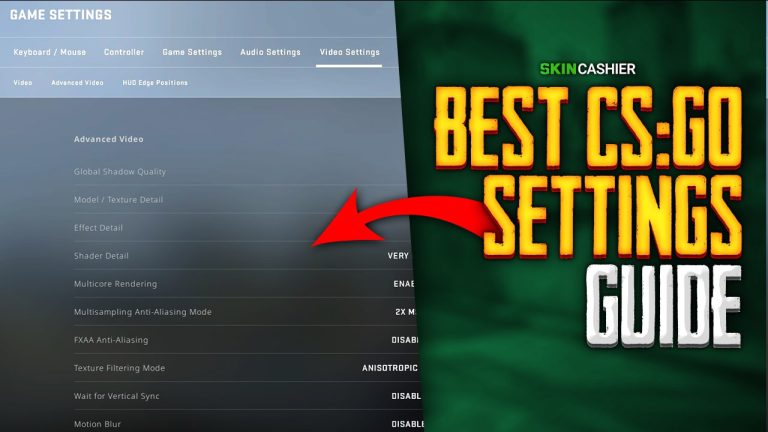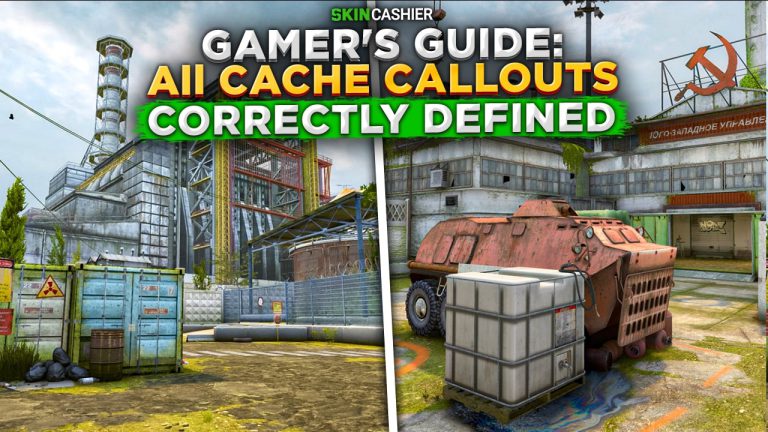Table of Contents
Weapon skins and knife skins created by the CS:GO community play a very important role in Counter-Strike: Global Offensive. In-game weapon skins are an integral part of the game, with an entire economy of skins. A good-looking CSGO skin can be worth a small fortune. Some, like the AWP Dragon Lore, even reach legendary status among the community.
New skins get added to the game regularly, allowing every player to refresh their weapon skins and creators to gain fame and potentially money. In 2021 Valve has held a Dreams & Nightmares competition for artists, allowing them to create their own custom paint styles for any gun, and potentially win $1 000 000 dollars.
As you can see, CSGO skins can be a great way to gain potential fame and popularity. Because of this many players try to create skins that will make it into the game. If you’re interested as well, here’s everything you need to know about how to make CS GO skins.
Getting Started
Creating skins can be a bit of a daunting task and requires some specialist knowledge, however, anyone who wants to add new skins to the game can easily do so without a lot of effort, provided that they know how the skins system works in CSGO.
Prior to one important update, creating CSGO skins took some learning, as you needed to extract the weapon files by yourself, get graphic editing software, and finish the entire process without any help.
For those who want a custom paint job or a skin finish style of their own, Valve has introduced an easy tool, known as the workbench. With this simple tool, any player can easily start creating CSGO skins of their own inside the game client, without any specialized knowledge or technical skill.
Before you try and use the workbench for your own CSGO skins, you have to enable the developer console. Once you’ve done this, bring up the developer console in-game and type in the command:
- workshop_workbench
If you’ve done everything correctly, this command should immediately open the workbench and let you start working on your skins. Try to use the workbench outside of a match and keep in mind that you might encounter display issues on lower-resolution screens.
How To Create Skins
The CSGO Workbench is a simple tool, that allows anyone to start creating weapon skins in any of the popular CSGO styles. You can easily create skins for the entire weapon in one of the many available styles, such as spray paint, anodized airbrushed style, solid color style, or even a flashy and custom graphic design of your own. With the CSGO workbench, you can also see how your skin will look at minimal wear, battle-scarred, or any other wear values available in the game. In addition, the workbench makes selling CSGO skins easy with its integration with the game client.
With the workbench, you no longer need the individual gun files, as you have access to them by default with this tool. While there are many technical details regarding CSGO skins creation that go into the CSGO workbench, you don’t really need to know them to create your own skins. After all, the tool was introduced to streamline skins creation for all users who don’t want to bother with the old way of ripping gun files + photoshop.
The game lets you combine many different colors to create skins (although you have to keep in mind, that you’re limited to 4 colors and that your skin has to look at least somewhat realistic), giving you a lot of space to experiment. If you want to try any of the different patterns available and play around with switching the colors, here are the console commands that you can load up in the workbench to immediately get to work:
Single Coat
“workshop workbench” { “style” “1” “color0” “47 52 37” “color1” “65 78 61” “color2” “102 91 66” “color3” “51 53 26” “phongexponent” “16” “phongintensity” “100” “wear_remap_min” “0.06” “wear_remap_max” “0.8” “dialog_config” “12,0,0,1” }
Spray paint
“workshop workbench” { “style” “3” “pattern” “tiger” “pattern_scale” “0.9” “color0” “56 71 54” “color1” “158 149 114” “color2” “79 41 32” “color3” “45 46 33” “phongintensity” “5” “phongexponent” “32” “pattern_offset_x_start” “0” “pattern_offset_x_end” “1” “pattern_offset_y_start” “0” “pattern_offset_y_end” “1” “pattern_rotate_start” “-10” “pattern_rotate_end” “7” “wear_remap_min” “0.06” “wear_remap_max” “0.8” “dialog_config” “12,0,0,1” }
Hydrographic
“workshop workbench” { “style” “3” “pattern” “tiger” “pattern_scale” “0.9” “color0” “56 71 54” “color1” “158 149 114” “color2” “79 41 32” “color3” “45 46 33” “phongintensity” “5” “phongexponent” “32” “pattern_offset_x_start” “0” “pattern_offset_x_end” “1” “pattern_offset_y_start” “0” “pattern_offset_y_end” “1” “pattern_rotate_start” “-10” “pattern_rotate_end” “7” “ignore_weapon_size_scale” “1” “dialog_config” “12,0,0,1” }
Anodized
“workshop workbench” { “style” “1” “color0” “47 52 37” “phongexponent” “16” “phongintensity” “100” “wear_remap_min” “0.06” “wear_remap_max” “0.8” “dialog_config” “12,0,0,1” }
Anodized Multicolored
“workshop workbench” { “style” “5” “pattern” “zebra” “pattern_scale” “2.5” “color0” “94 34 35” “color1” “94 34 35” “color2” “57 21 22” “color3” “23 23 23” “phongalbedoboost” “100” “phongexponent” “4” “pattern_offset_x_start” “0” “pattern_offset_x_end” “1” “pattern_offset_y_start” “0” “pattern_offset_y_end” “1” “wear_remap_min” “0.1” “wear_remap_max” “0.26” “view_model_exponent_override_size” “1024” “dialog_config” “12,0,0,1” }
Anodized Airbrushed Style
“workshop workbench” { “style” “6” “pattern” “flamegraphic” “pattern_scale” “1.6” “color0” “80 10 1” “color1” “34 2 1” “color2” “16 16 16” “color3” “90 60 4” “phongalbedoboost” “30” “phongexponent” “16” “pattern_offset_x_start” “-1.3” “pattern_offset_x_end” “-1.3” “pattern_offset_y_start” “0” “pattern_offset_y_end” “1” “wear_remap_min” “0.0” “wear_remap_max” “0.08” “ignore_weapon_size_scale” “1” “dialog_config” “12,0,0,1” }
Patina
“workshop workbench” { “style” “8” “pattern” “aged” “pattern_scale” “2” “color0” “90 62 50” “color1” “77 46 40” “color2” “68 72 70” “color3” “121 142 135” “phongalbedoboost” “35” “pattern_offset_x_start” “0” “pattern_offset_x_end” “1” “pattern_offset_y_start” “0” “pattern_offset_y_end” “1” “pattern_rotate_start” “0” “pattern_rotate_end” “360” “wear_remap_min” “0.0” “wear_remap_max” “1.0” “dialog_config” “12,0,0,1” }
Non-standard
“workshop workbench” { “style” “7” “pattern” “bullet_rain_m4” “pattern_scale” “1” “phongintensity” “153” “phongexponent” “128” “pattern_offset_x_start” “0.0” “pattern_offset_x_end” “0.0” “pattern_offset_y_start” “0.0” “pattern_offset_y_end” “0.0” “pattern_rotate_start” “0.0” “pattern_rotate_end” “0.0” “wear_remap_min” “0.02” “wear_remap_max” “0.46” “ignore_weapon_size_scale” “1” “dialog_config” “12,0,0,1” }
Gunsmith
“workshop workbench” { “style” “9” “pattern” “mother_of_pearl_elite” “color0” “255 255 255” “color1” “255 255 255” “color2” “196 196 196” “color3” “228 228 228” “pattern_scale” “1.00” “phongexponent” “255” “phongintensity” “10” “phongalbedoboost” “20” “ignore_weapon_size_scale” “1” “only_first_material” “0” “pattern_offset_x_start” “0.00” “pattern_offset_x_end” “0.00” “pattern_offset_y_start” “0.00” “pattern_offset_y_end” “0.00” “pattern_rotate_start” “0.00” “pattern_rotate_end” “0.00” “wear_remap_min” “0.00” “wear_remap_max” “1.00” “view_model_exponent_override_size” “1024” “dialog_config” “4,0,0,1” }
Can You Sell CSGO Skins You’ve Created?
Yes, if your skin meets all the necessary requirements, you can upload it to the Steam Workshop page, where players can see your potential addition, and Valve can choose to add it to the game in the next update.
While this allows you to create skins to make money, it’s not entirely sure how much artists make on their CSGO skins. The reason is that while artists can disclose how much they usually make on their skins, the contract with Valve states that it is calculated by using parameters, which can be considered sensitive information. One artist has disclosed that the number can be as high as $400000, which means that if you know what you’re doing, you can easily make a lot of money.
In Conclusion
Creating CSGO skins can not only get you fame in the CS GO community but can also make you money, provided you’re a good enough artist. If you want to try your luck, try the CSGO workbench for yourself and see if you’ve got what it takes.
![[EN] BLOG](https://skincashier.com/blog/wp-content/uploads/sites/9/2022/09/skincashier-logo-1-1.png)
